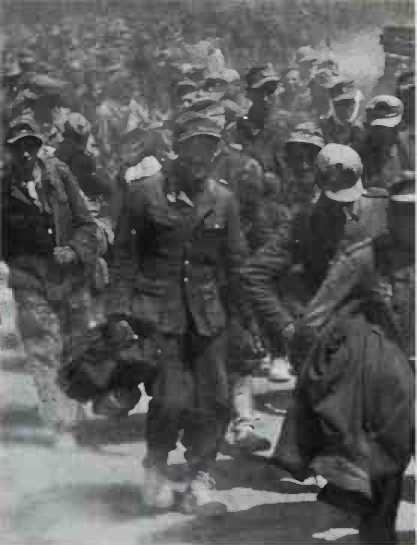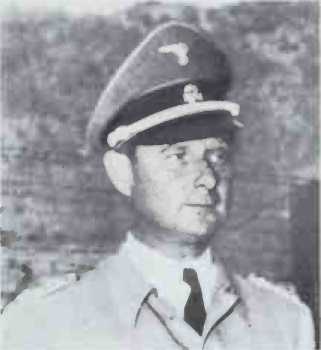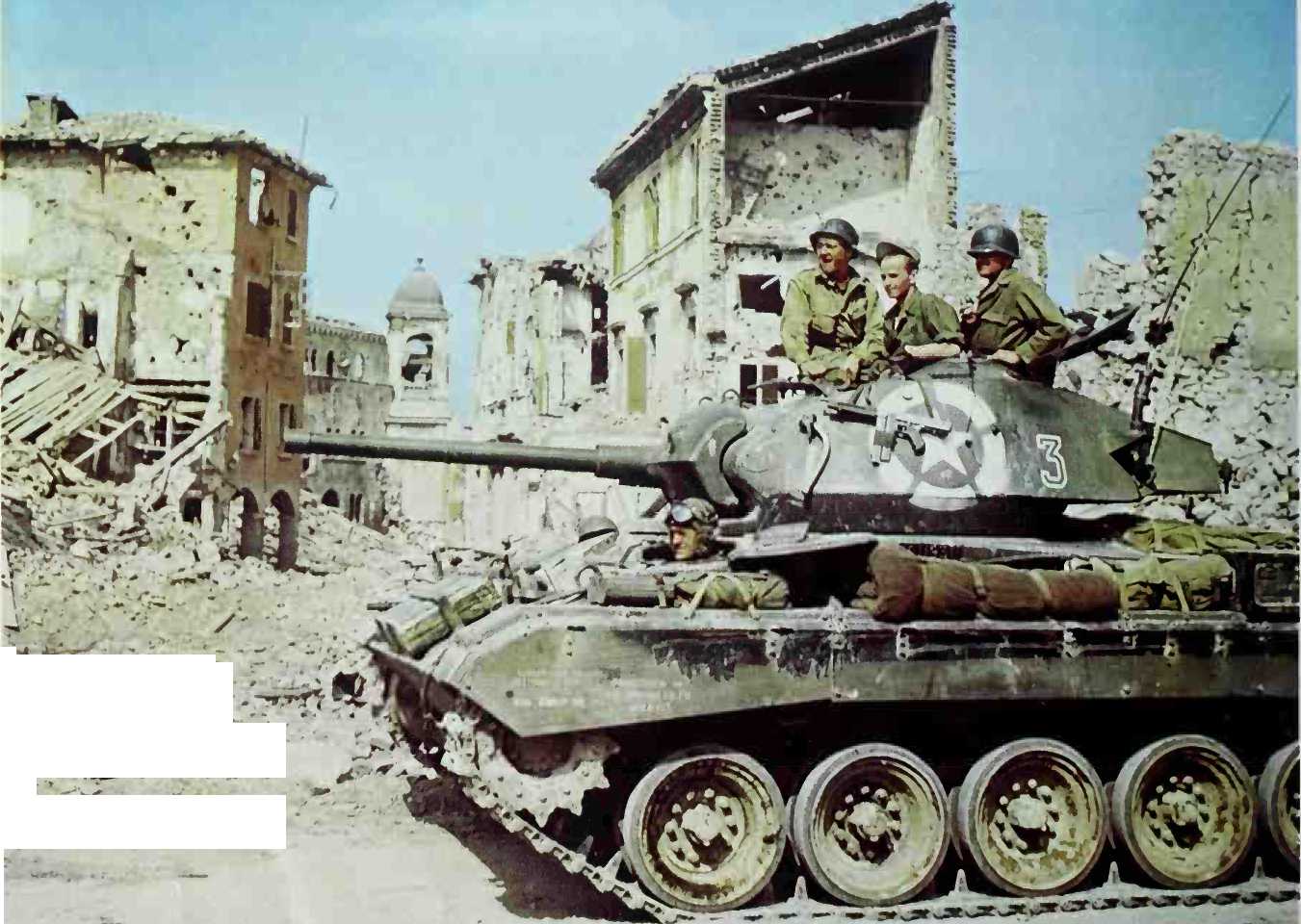During the winter months there were changes in command on both sides. On the death of Sir John Dill, head of the British mission to Washington, Maitland Wilson was sent in his place and Alexander became Supreme Allied Commander Mediterranean, with promotion to Field-Marshal, backdated to the capture of Rome. Clark now commanded the 15th Army Group, and Truscott was recalled from France to take over the 5th Army. On the German side Lemelsen still commanded the 14th Army and General Traugott Herr, whose corps had held the early attacks on the Adriatic flank, the 10th Army in what was to prove the critical eastern sector. Kesselring left in the middle of March to become O. B. West and Vietinghoff, hurriedly recalled from the Baltic, took his place with unequivocal orders from Hitler to hold every yard of ground. This further example of the Fiihrer’s inept "rigid defence” doctrine proved disastrous, as Vietinghoff entered the ring for the final round of the campaign like a boxer with his bootlaces tied together!
In conditions of heavy snow and frost, the struggle on both sides was now against the forces of nature, and the Allied supply routes could only be kept open by the daily and unremitting efforts of thousands of civilians and all but those units in the most forward positions. While the Germans hoarded their meagre supplies of petrol and both sides built up stocks of ammunition, the Allied units at last began to receive some of the specialised equipment they had for so long been denied; "Kangaroos”, the Sherman tanks converted to carry infantry; D. D.s, the amphibious tanks that had swum ashore onto the Normandy beaches; and "Fan-tails”, tracked landing vehicles for shallow waters, of which 400 were promised for use on Lake Comacchio and the nearby flooded areas. At the same time the armoured regiments were re-equipped with up-gunned Sherman and Churchill tanks. Tank-dozers, and "Crocodile” flame-throwing tanks, many of which were fitted with "Platypus” tracks to compete with the soft ground of the Romagna. Throughout the remaining winter months the "teeth” arms were busy training with new assault equipment, such as bridge-laying tanks and flame throwers. The experience of the British 78th Division, back after refitting in the Middle East, is a typical example of the hard work put into preparing for the spring offensive.
"Training began almost at once exercises for testing communications, in river crossings, in street fighting and, above all in co-operation with armour. 2 Armoured Brigade. . . was affiliated to the Division for these exercises... it was the first time in Italy that 78 Division

A /n the British V Corps’ rear area: men of the 8th Army get a chance to have a closer (and safer!) look at the armoured vehicles used by the Germans. Note the hoarding for the exhibition, featuring Jon's immortal "Two Types".
V < British Churchill tanks in action in the artillery support role.
A German prisoners in Italy.

A - S’..S', OhorKrui)pc! nfuhror Karl Wolff, military governor of northern Italy and Germany's liaison man with Mussolini.
> American liberation forces enter the city of Milan, led by an armoured car of the Italian Communist partisans.
V Vergato, south of Bologna: an M24 Chaffee of the 81st Reconnaissance Squadron of the U. S. 1st Armoured Division rolls confidently into the ruins.
Had lived, trained, and held the line with the armour with which it was later to carry out full-scale operations: this was the genesis of the splendid team work between tanks and infantry soon to be shown in the final battle.”
Before handing over, Kesselring kept his troops hard at work building defences on every river-line right back to the Reno and indeed on the line of the Po itself. Although milked of forces for the other fronts, his two armies still contained some of the very best German divisions. These were now well up to strength and fully rested, as for instance the two divisions of I Parachute Corps, commanded by the redoubtable General Richard Heidrich, which between them mustered 30,000 men. The active front, however, much of which was on difficult ground not of his own choosing, was 130 miles long, and his supply lines were constantly being attacked from the air and by partisans. To cover his front he allocated 19 German divisions (including the 26th Panzer, and 29th and 90th Pan-zergrenadier). Five more German infantry divisions, plus four Italian divisions and a Cossack division, were held back to watch the frontiers and, in particular, to guard against a landing in the Gulf of Venice. Here, had he but known, sand-bars precluded large-scale amphibious operations.
The relative strength of the 15th Army Group was now lower than ever before. Three divisions had been rushed to intervene in the civil war in Greece and I Canadian Corps had left for Holland in February. There remained only 17 divisions, including the newly arrived American 10th Mountain Division. But Alexander held an ace-overwhelming strength in the air. With the combined bomber offensive drawing to a close, more and more heavy bomber squadrons were released to support the coming offensive and by April were pounding away at the

German supply routes. By D-day every railway line north of the Po had been cut in many places. Nor had the two tactical air forces been idle. On February 6, 364 sorties were flown against the Brenner pass and targets in the Venetian plain, while in March the German supply dumps, so carefully built-up during the winter, were systematically attacked. Above the battlefield, in clearing skies, the Allies’ planes roamed at will and when the offensive opened, a total of
4,000 aircraft was available to intervene directly in the land battle.




 World History
World History









